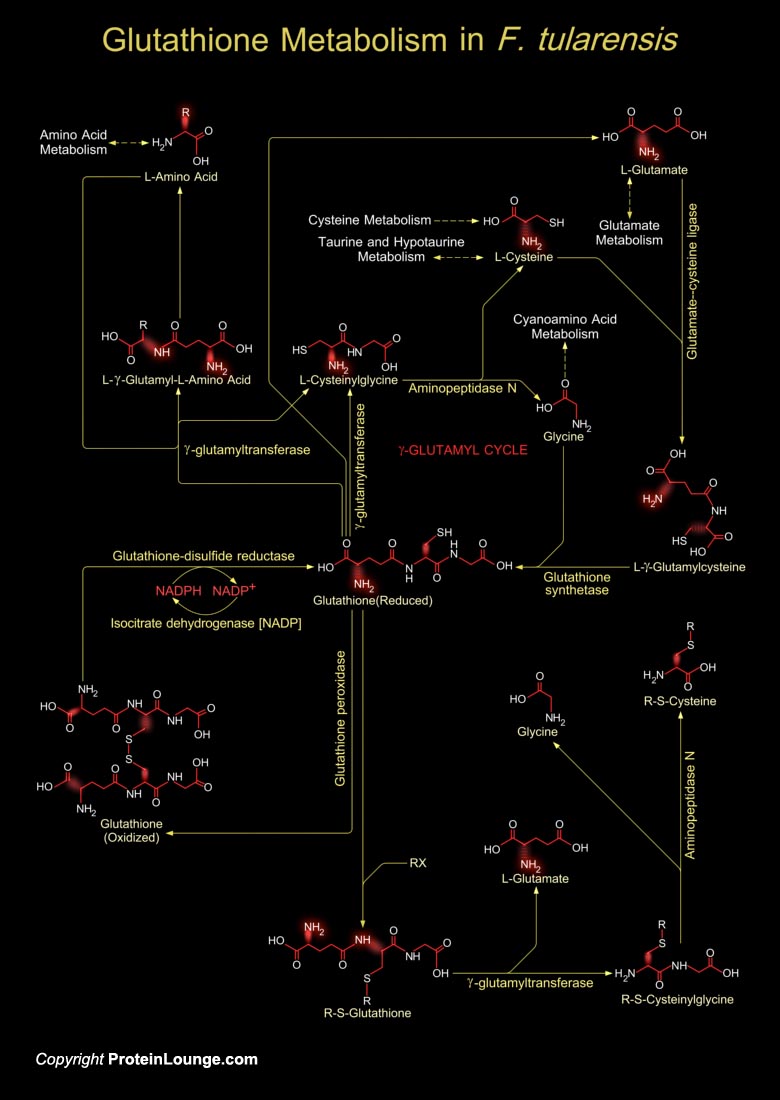
Francisella is a genus of pathogenic bacteria. The type species, F. tularensis is a rod-shaped Gram-negative bacterium and is the causative agent of tularemia or rabbit fever. The bacterium is an aerobic pleiomorphic coccobacillus, which requires oxygen for growth, is variable in shape, with basic shape between a rod and a sphere, do not move by their own power, and do not form spores. Glutathione metabolism in F. tularensis occurs within cells in two closely linked, enzymatically controlled reactions that utilize ATP and draw on nonessential amino acids as substrates (Ref.1). Glutathione is a tripeptide, composed of glutamate, cysteine and glycine, and has numerous important functions within the bacterial cell. This tripeptide is specifically a thiol compound, present[..]
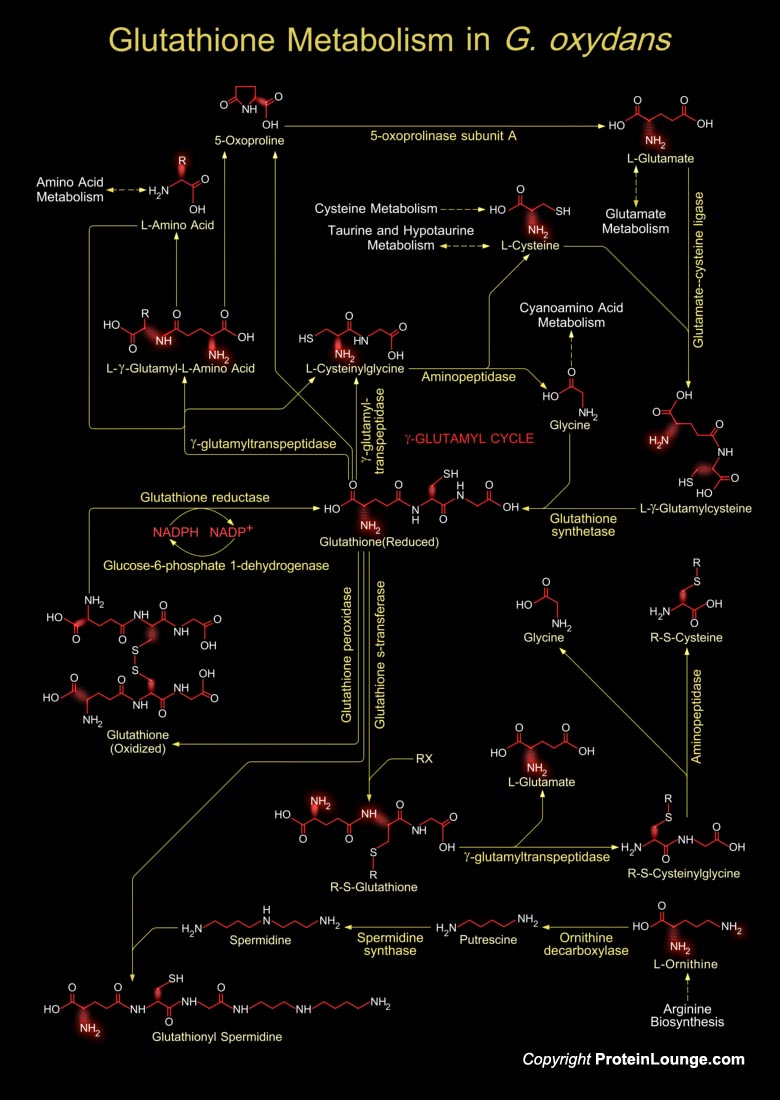
Gluconobacter oxydans is a Gram-negative bacterium belonging to the family Acetobacteraceae. It is a rod-shaped and obligately aerobic bacterium having a respiratory type of metabolism using oxygen as the terminal electron acceptor. It can grow in highly concentrated sugar solutions and at low pH values. It contains many membrane-bound dehydrogenases that are critical for the incomplete oxidation of biotechnologically important substrates (Ref.1). Glutathione (GSH), a tripeptide, is ubiquitous in eukaryotic system, found widely in Gram negative bacteria. Glutathione (GSH) is made-up of three amino acids viz. glutamic acid, cysteine and glycine Glutathione has diverse roles in biological systems for its antioxidative, immune boosting and cellular detoxifying activities.[..]
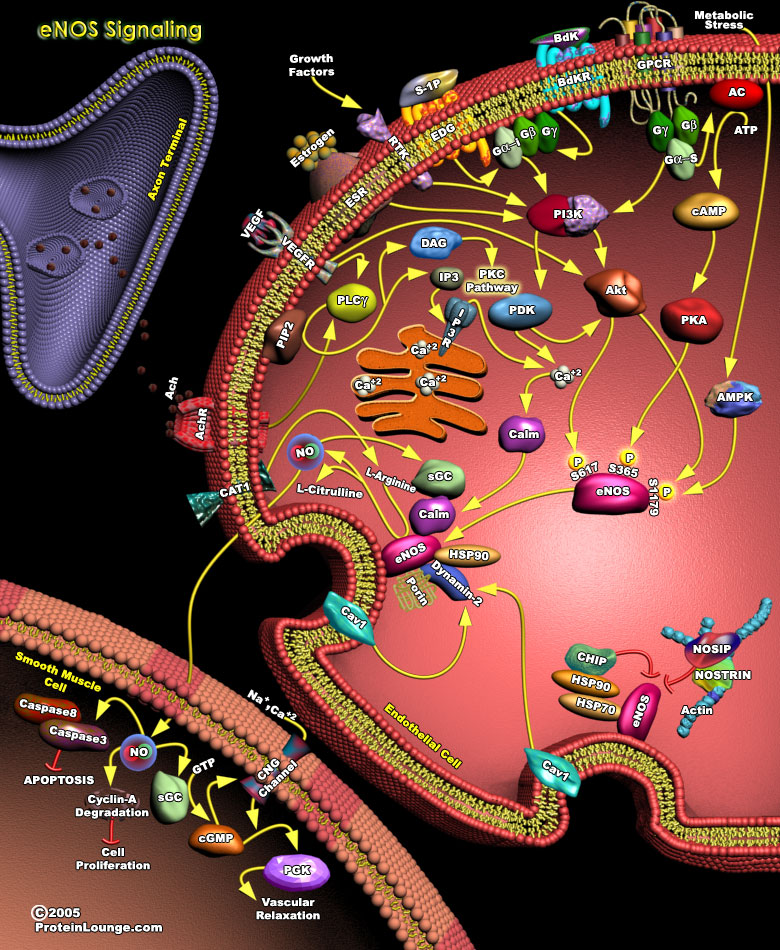
NO (Nitric Oxide) is a short-lived free radical gas involved in diverse physiological and pathological processes. It is produced along with L-Citrulline by the oxidation of L-Arginine and catalyzed by three different isoforms of NOS (NO Synthase). Type-I nNOS (neuronal NOS) and Type-III eNOS (endothelial NOS) are constitutively expressed as latent enzymes and require a higher concentration of Ca2+ for the enzyme activity. In contrast, Type-II iNOS (inducible NOS) is Ca2+ independent because it’s high affinity for Ca2+/Calm (Calmodulin) renders the enzyme active even at basal levels of intracellular Ca2+ . The catalysis of this reaction requires a number of essential cofactors such as mononucleotide, FAD (Flavin Adenine Dinucleotide), and NADPH (Nicotinamide Adenine[..]
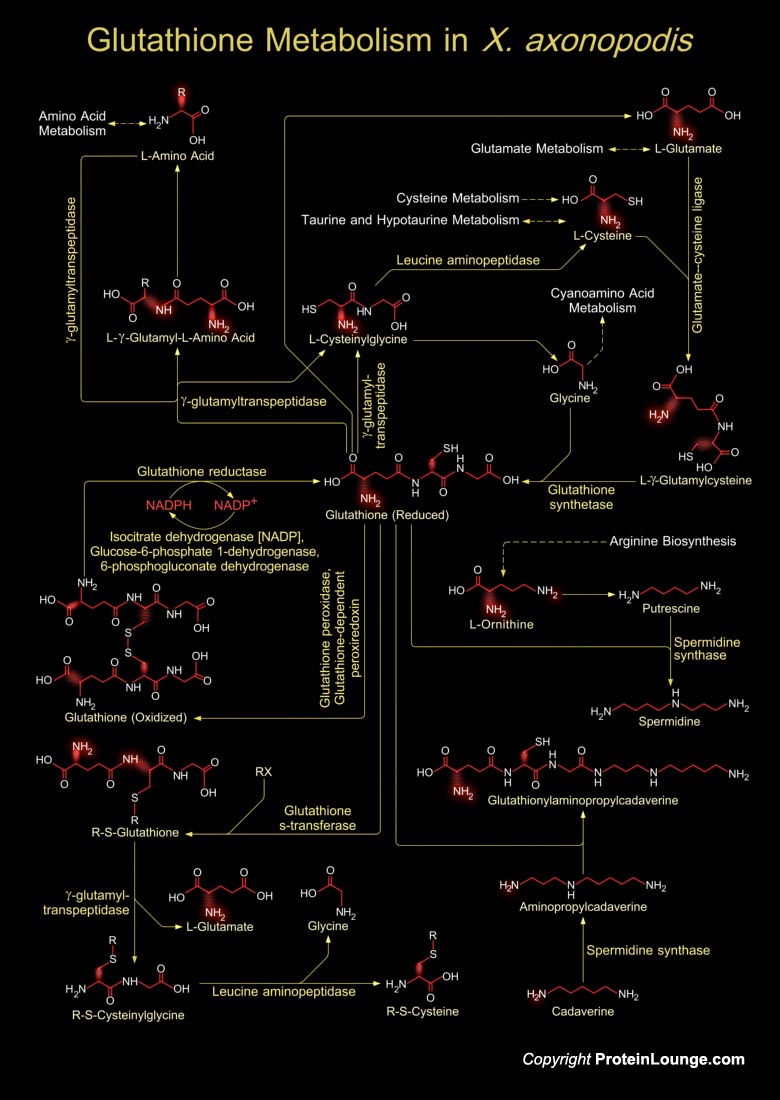
Xanthomonas is a Gram-negative rod-shaped bacterium known for being a common plant pathogen. This bacterium is grown commercially to produce the exopolysaccharide xanthan gum, which is used to control viscosity and as a stabilizing agent in many industries. Xanthomonas affects many types of hosts, including citrus, beans, grapes, cotton, and rice. X. axonopodis causes citrus cankers and black rot, which affects many commercial plants. Typical symptoms of the disease include lesions on the leaves, fruit, and stems as well as twig dieback. X. axonopodis is motile by a single polar flagellum and produces slow growing, non-mucoid colonies in culture. It is the causal agent of Asiatic Citrus Canker on most Citrus sp. and close relatives of Citrus in the family Rutaceae[..]

Xanthomonas is a Gram-negative rod-shaped bacterium known for being a common plant pathogen. Xanthomonas campestris causes black rot, which affects crucifers such as Brassica and Arabidopsis. Symptoms include marginal leaf chlorosis and darkening of vascular tissue, accompanied by extensive wilting and necrosis. This bacterium is grown commercially to produce the exopolysaccharide xanthan gum, which is used to control viscosity and as a stabilizing agent in many industries. Xanthomonas affects many types of hosts, including citrus, beans, grapes, cotton, and rice. Typical symptoms of the disease include lesions on the leaves, fruit, and stems as well as twig dieback (Ref.1).Glutathione metabolism in Xanthomonas occurs within cells in two closely linked, enzymatically[..]
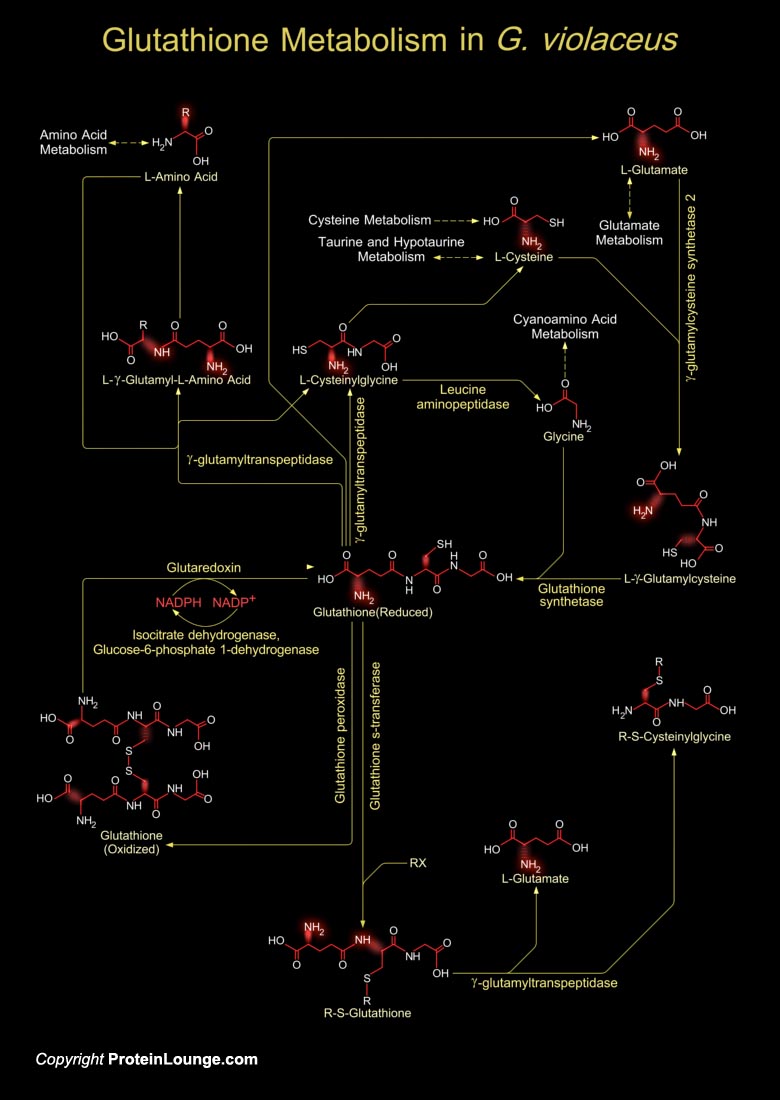
Gloeobacter is a genus of cyanobacteria. Gloeobacter violaceus (G. violaceus) the unicellular cyanobacterium is the only known oxygenic photoautotroph which does not contain thylakoid membranes hence all membrane-bound bioenergetic processes take place in the green plasma membrane of this organism. G. violaceus is a rod-shaped, unicellular cyanobacterium with unusual characteristics. It is an obligate photoautotroph, sensitive to strong light and it has a relatively long generation time (Ref.1). Cyanobacterias are the organisms to be exposed to the toxic reactive oxygen species (ROS): singlet oxygen (1 O2), superoxide anion (O2−), hydrogen peroxide (H2O2), and hydroxyl radical (OH) as they have evolved from oxygenic photosynthesis. ROS is generated when[..]
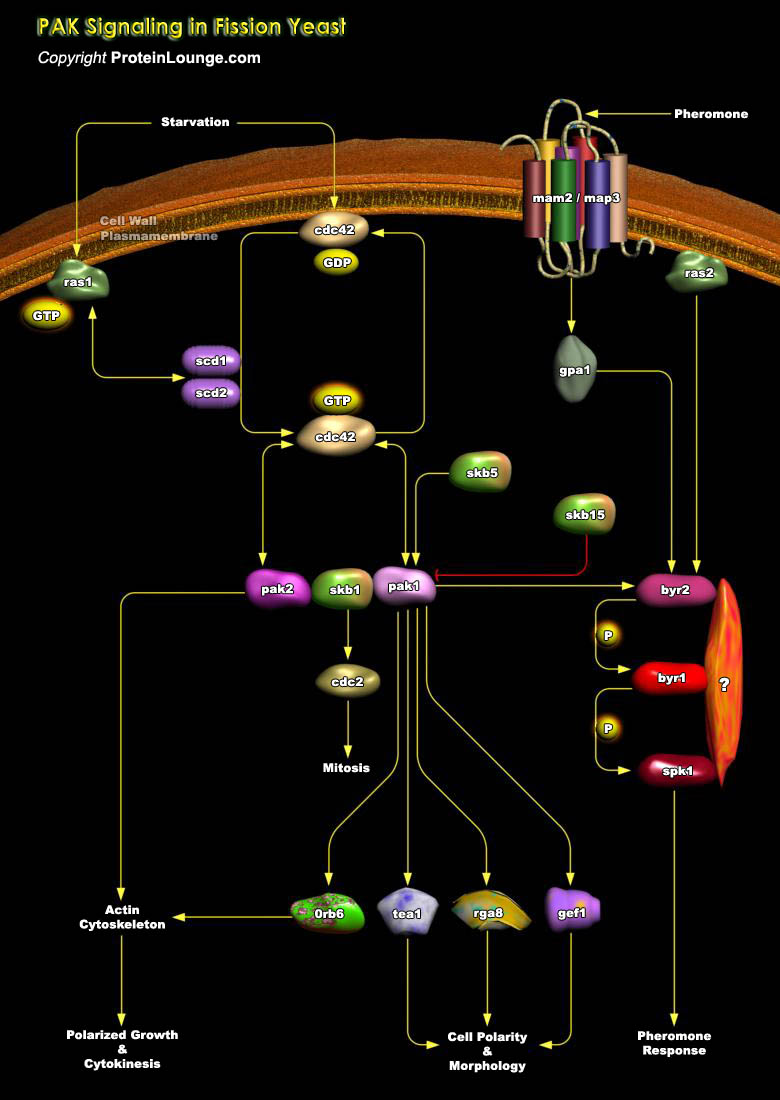
Simple eukaryotes such as yeasts and molds encode multiple PAKs (p21-Activated Kinases) that, like their orthologs in other systems, act downstream of Rho-family GTPases. All PAKs contain an N-terminal PBD (p21 GTPase-Binding-Domain), which confers binding to small GTPases such as CDC42 (Cell Division Cycle-42) or Rac, and a C-terminal protein kinase domain, but they do not bind to Rho, Ras, or other small G-proteins. CDC42 and Rac bind in a GTP-dependent fashion to a highly conserved sequence, referred to as the CRIB (CDC42 and Rac Interactive Binding) domain, found in the N-terminal regulatory domains of all characterized PAKs (Ref.1).The fission yeast Schizosaccharomyces pombe encodes two PAK kinases–Pak1/Shk1 and Pak2/Shk2–both of which, like their[..]
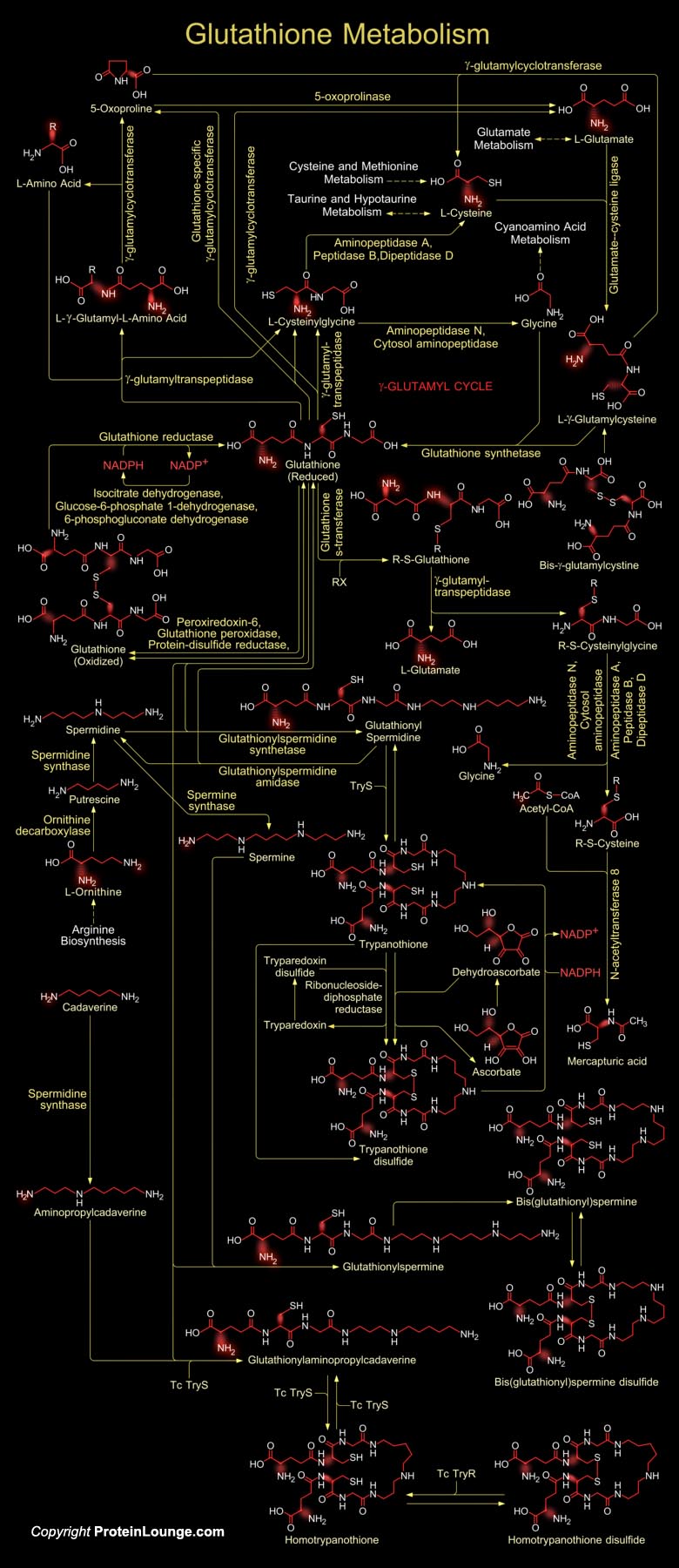
Glutathione is a sulfhydryl (-SH) antioxidant, antitoxin, and enzyme cofactor. It is ubiquitous in animals, plants, and microorganisms, and being water soluble is found mainly in the cell cytosol and other aqueous phases of the living system. It is composed of Glutamate, Cysteine and Glycine that has numerous important functions within cells. Glutathione is homeostatically controlled, both inside the cell and outside. It often attains millimolar levels inside cells, which makes it one of the most highly concentrated intracellular antioxidants. Glutathione exists in two forms. The antioxidant "reduced Glutathione" tripeptide is conventionally called Glutathione and abbreviated Gsh; the oxidized form is a sulfur-sulfur linked compound, known as Glutathione[..]
-Mediated Signaling.jpg)
Axon regeneration is arrested in the injured CNS (Central Nervous System) by axon growth-inhibitory ligands expressed in oligodendrocytes/myelin and reactive astrocytes in the lesion and by fibroblasts in scar tissue. Growth cone receptors bind inhibitory ligands, activating a Rho-family GTPase intracellular signaling pathway that disrupts the actin cytoskeleton inducing growth cone collapse/repulsion. The known inhibitory ligands include Eph (Ephrins) expressed on astrocyte/fibroblast membranes; the myelin/oligodendrocyte-derived growth inhibitors Nogo, MAG (Myelin-Associated Glycoprotein), and OMGP (Oligodendrocyte Myelin Glycoprotein); and membrane-bound Sema (Semaphorins) produced by meningeal fibroblasts invading the scar (Ref.1).Myelin-associated inhibitory[..]
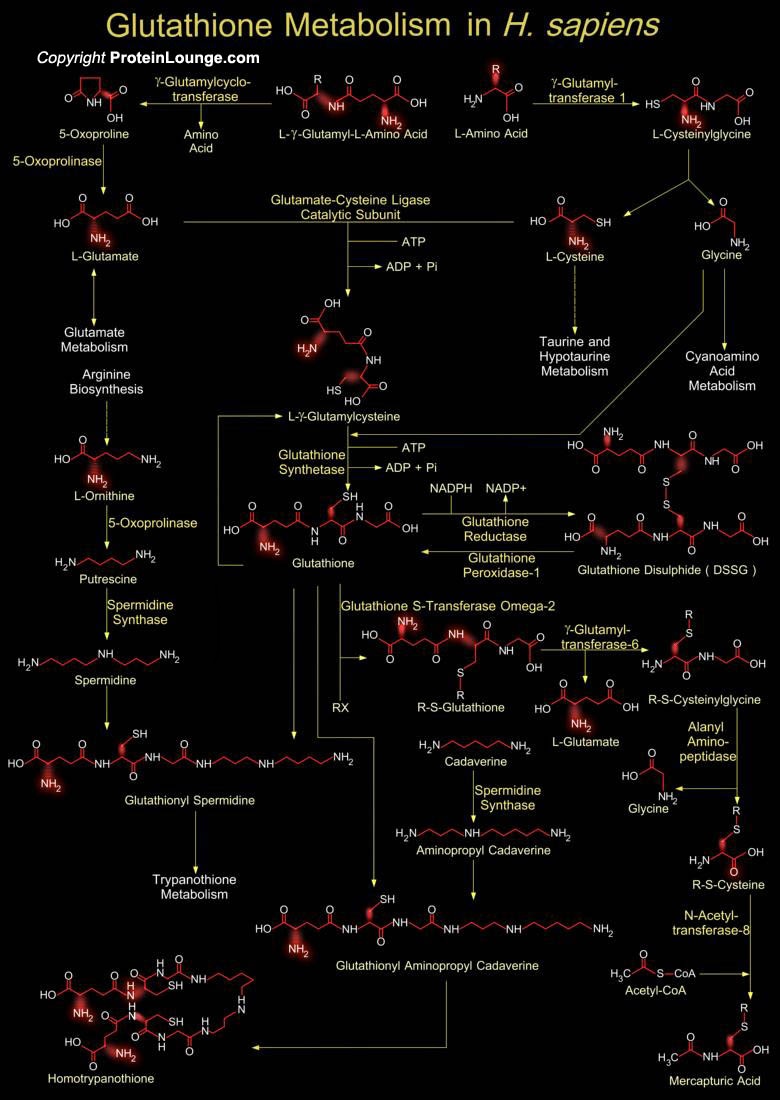
Glutathione is a sulfhydryl (-SH) antioxidant, antitoxin, and enzyme cofactor. It is ubiquitous in animals, plants, and microorganisms, and being water soluble is found mainly in the cell cytosol and other aqueous phases of the living system. Glutathione is a tripeptide composed of Glutamate, Cysteine and Glycine that has numerous important functions within cells. Glutathione is homeostatically controlled, both inside the cell and outside. It often attains millimolar levels inside cells, which makes it one of the most highly concentrated intracellular antioxidants. Glutathione exists in two forms. The antioxidant "reduced Glutathione" tripeptide is conventionally called Glutathione. The oxidized form is a sulfur-sulfur linked compound, known as Glutathione[..]
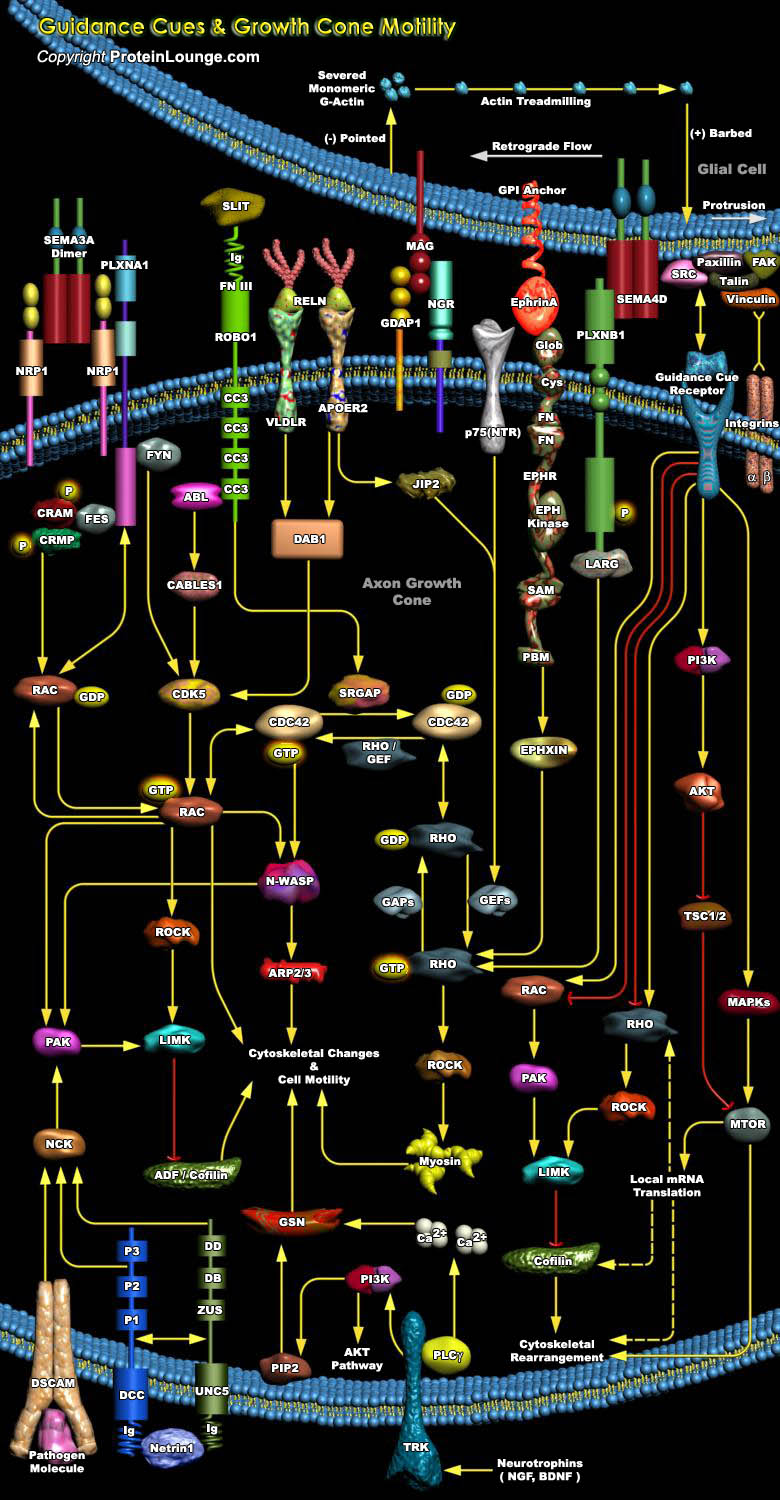
As an axon grows, the growth cone at its advancing edge encounters specific ‘choice points’ at which guidance cues steer specific axons towards their appropriate destinations. Such cues may attract a subset of axons towards a given domain, repel axons from inappropriate target regions or simply provide a permissive substrate for axonal outgrowth. There are many different ways in which a guidance signal might intervene to steer the growth cone. For example, a guidance cue might promote the initiation, extension, stabilization, or retraction of individual filopodia, or the capture or stabilization of microtubules in specific regions of the growth cone. In each of these cases, guidance signals must be relayed through the growth cone to the actin cytoskeleton,[..]
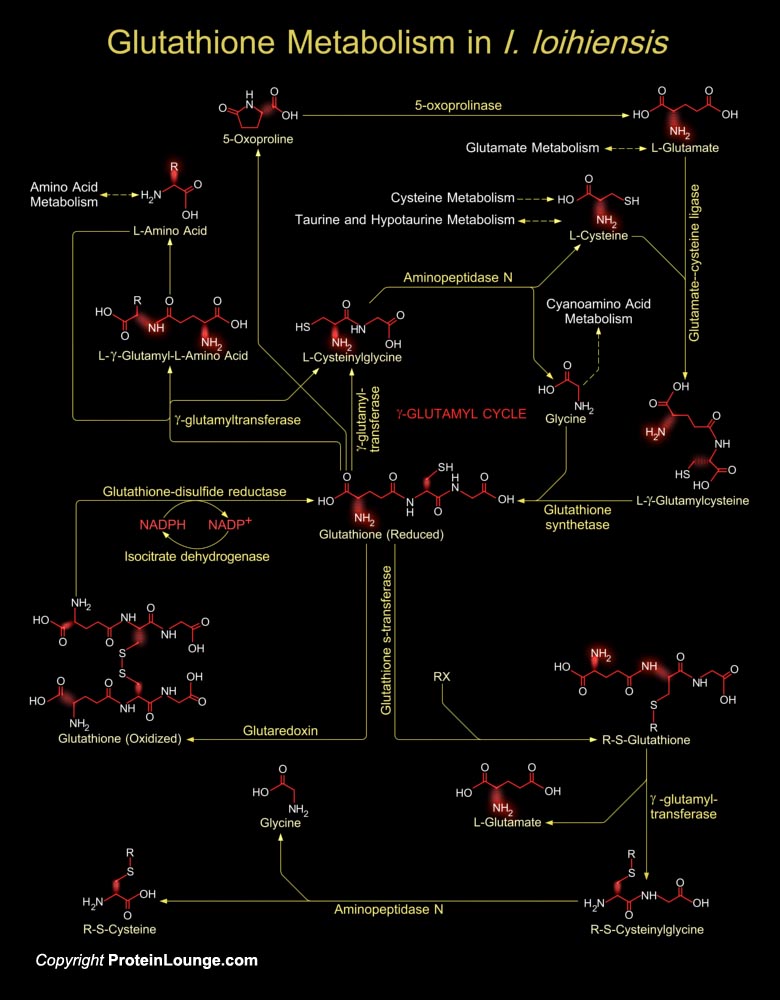
Idiomarina loihiensis is a deep-sea Gamma-proteobacterium. The bacterial genome encodes diverse peptidases, a variety of peptide and amino acid uptake systems, and versatile signal transduction machinery. In contrast to obligate anaerobic vent hyperthermophiles, I. loihiensis inhabits partially oxygenated cold waters at the periphery of the vent, surviving a wide range of growth temperatures (from 4°C to 46°C) and salinities (from 0.5% to 20% NaCl). The source of amino acids for I. loihiensis growth is the proteinaceous particles, present in the deep sea hydrothermal vent waters. The microbe is an opportunistic colonizer of proteinaceous particles in the deep-sea hydrothermal vent waters and colonizes these particles by using the secreted exopolysaccharide,[..]

